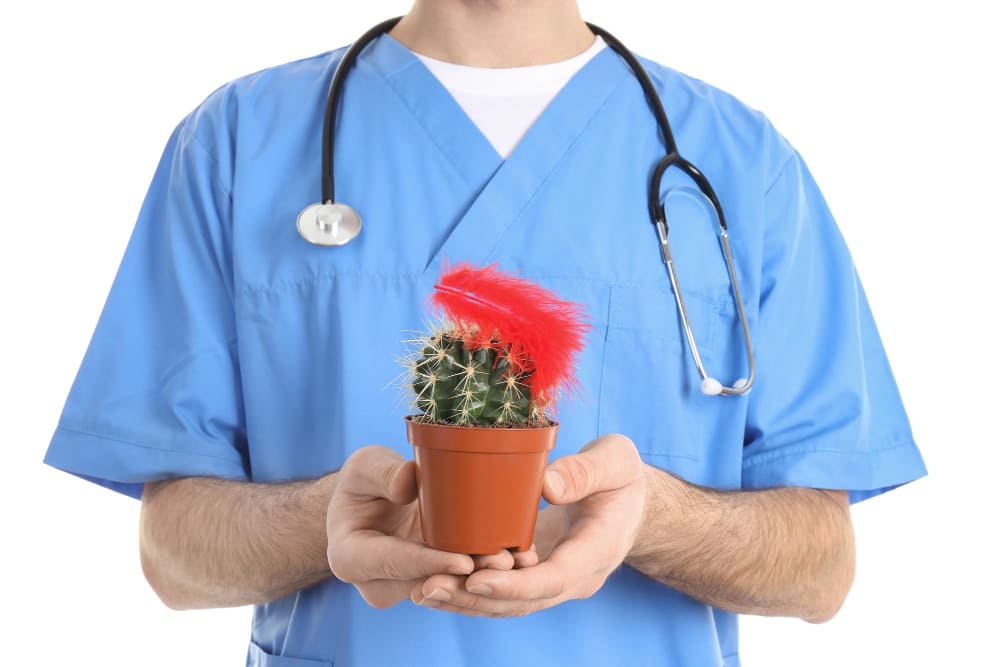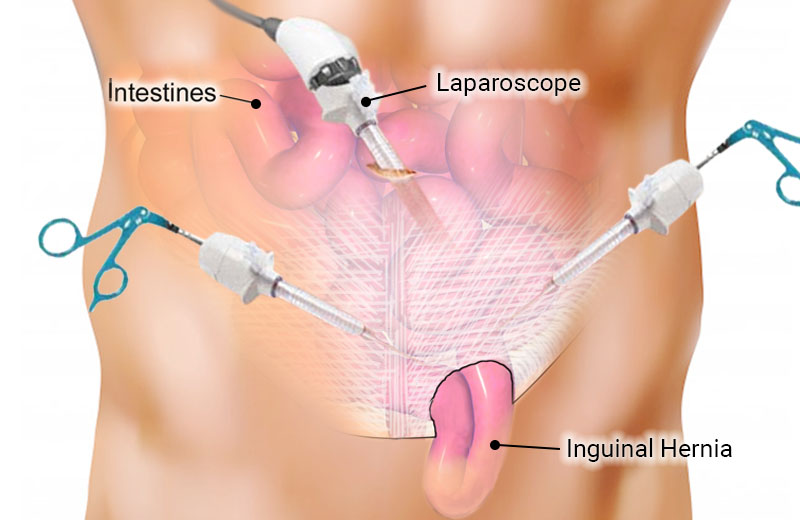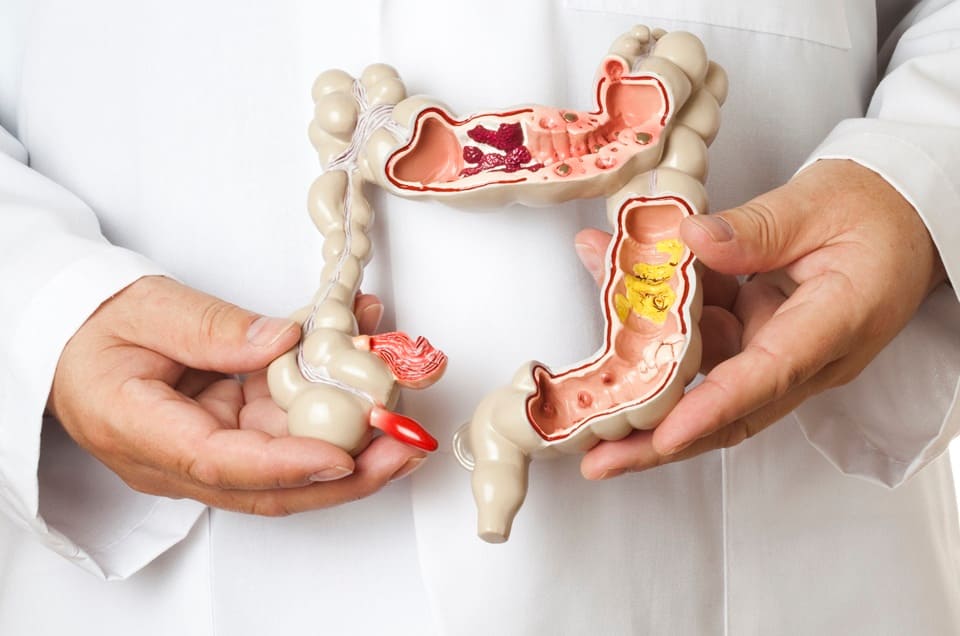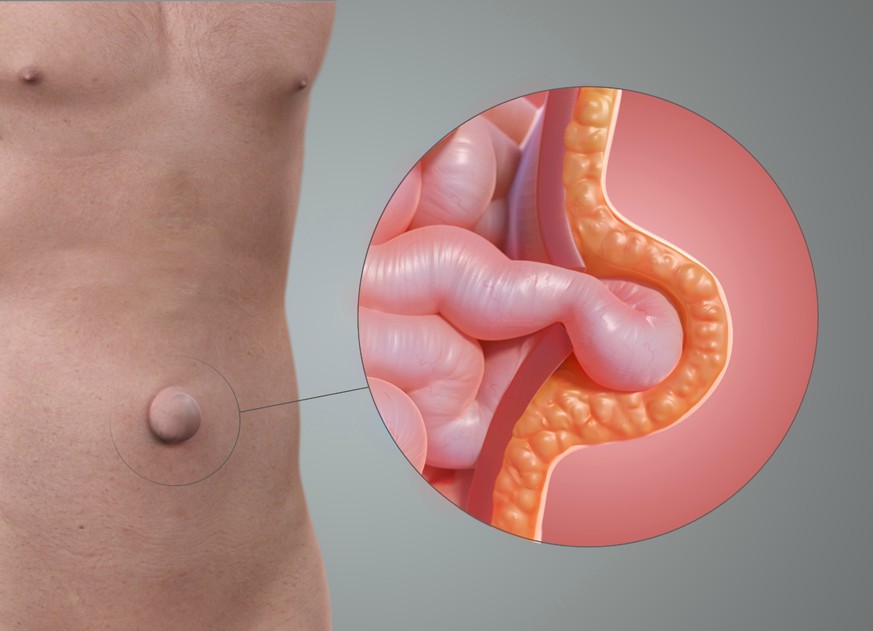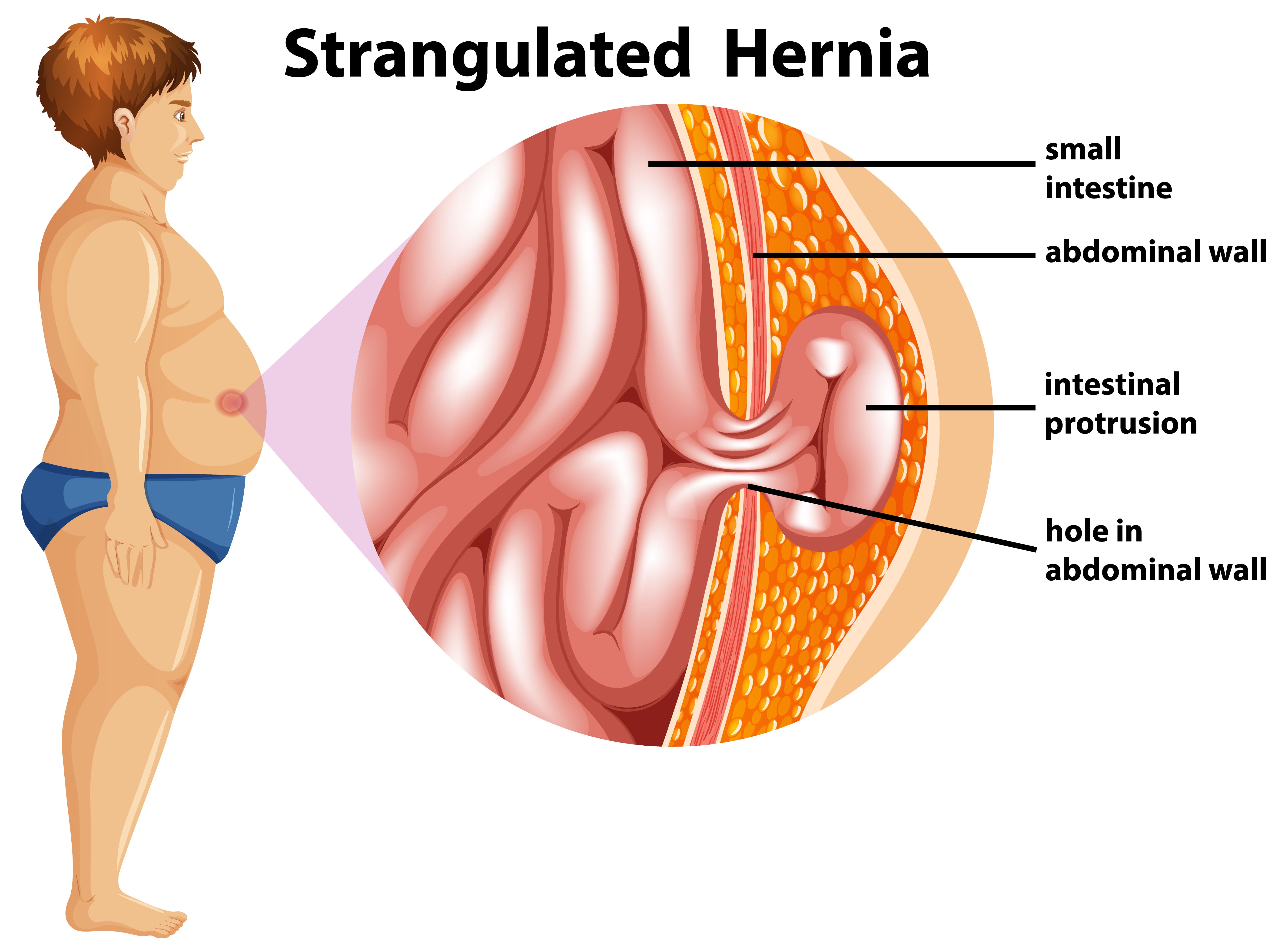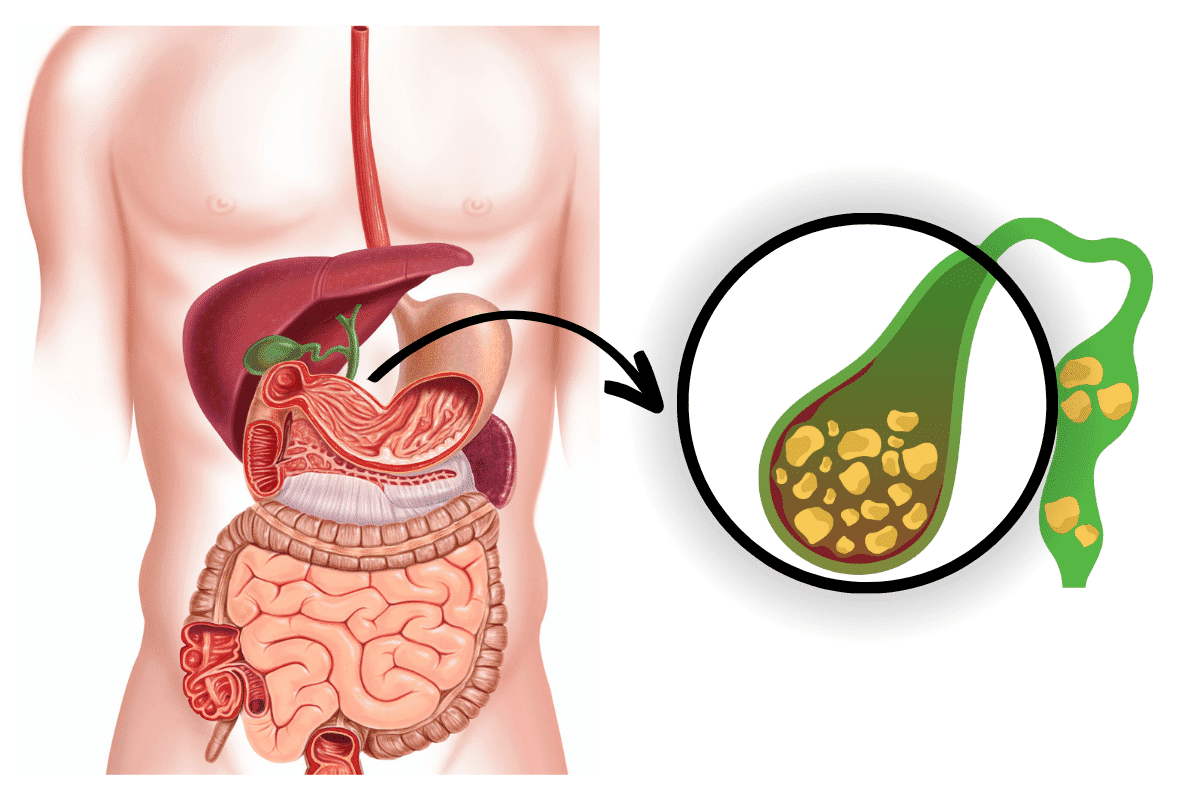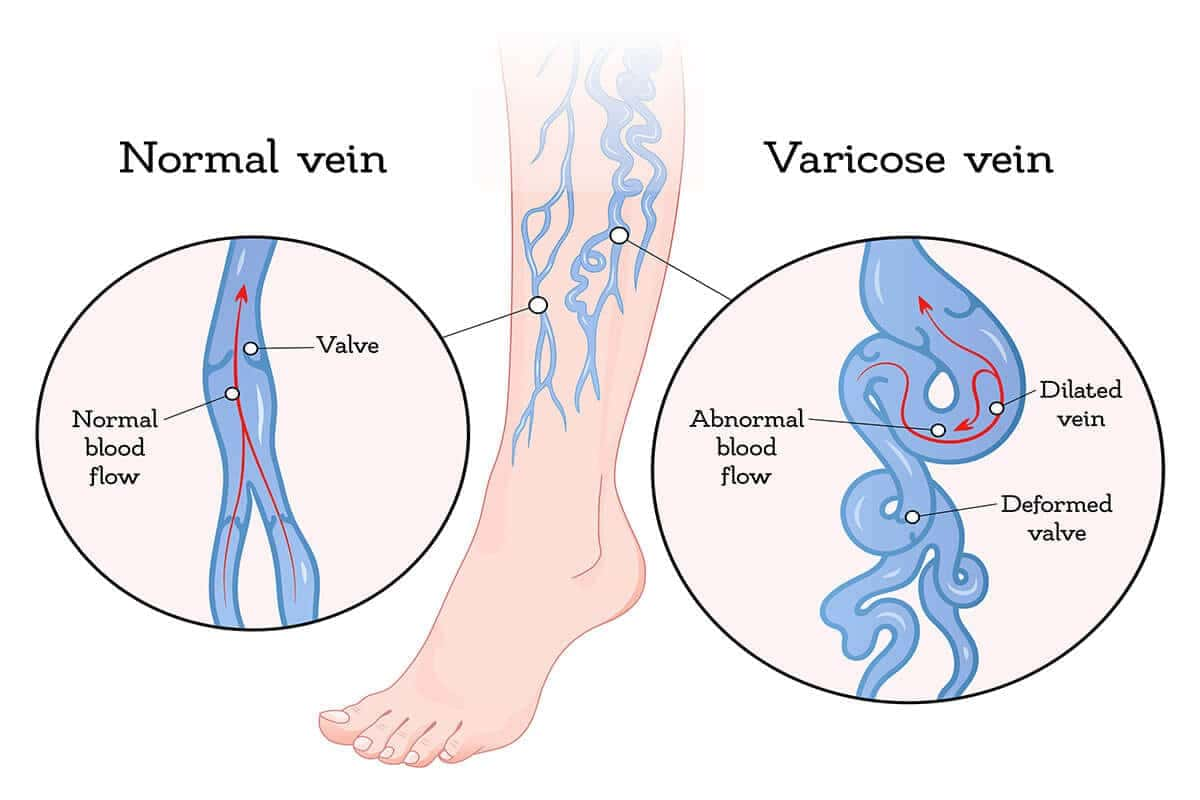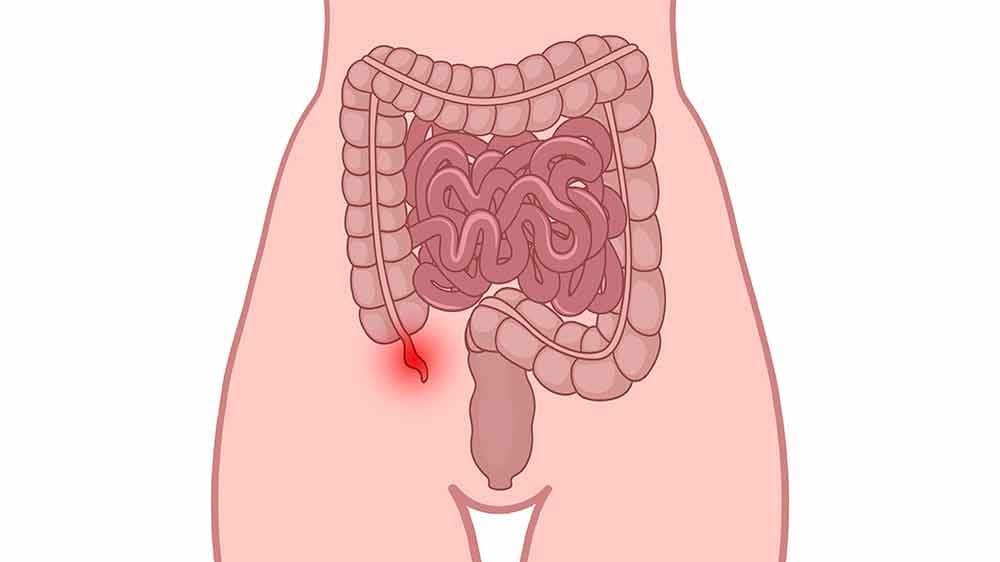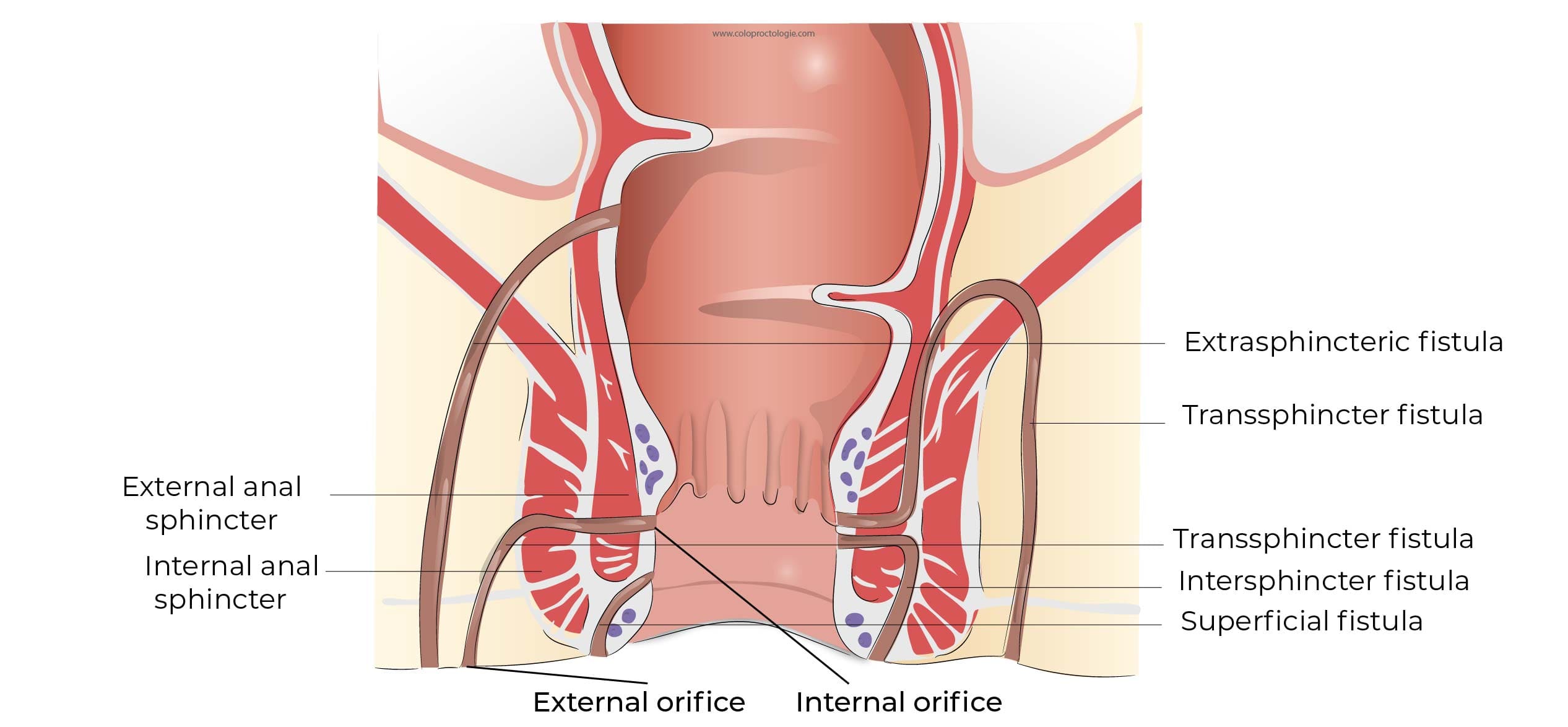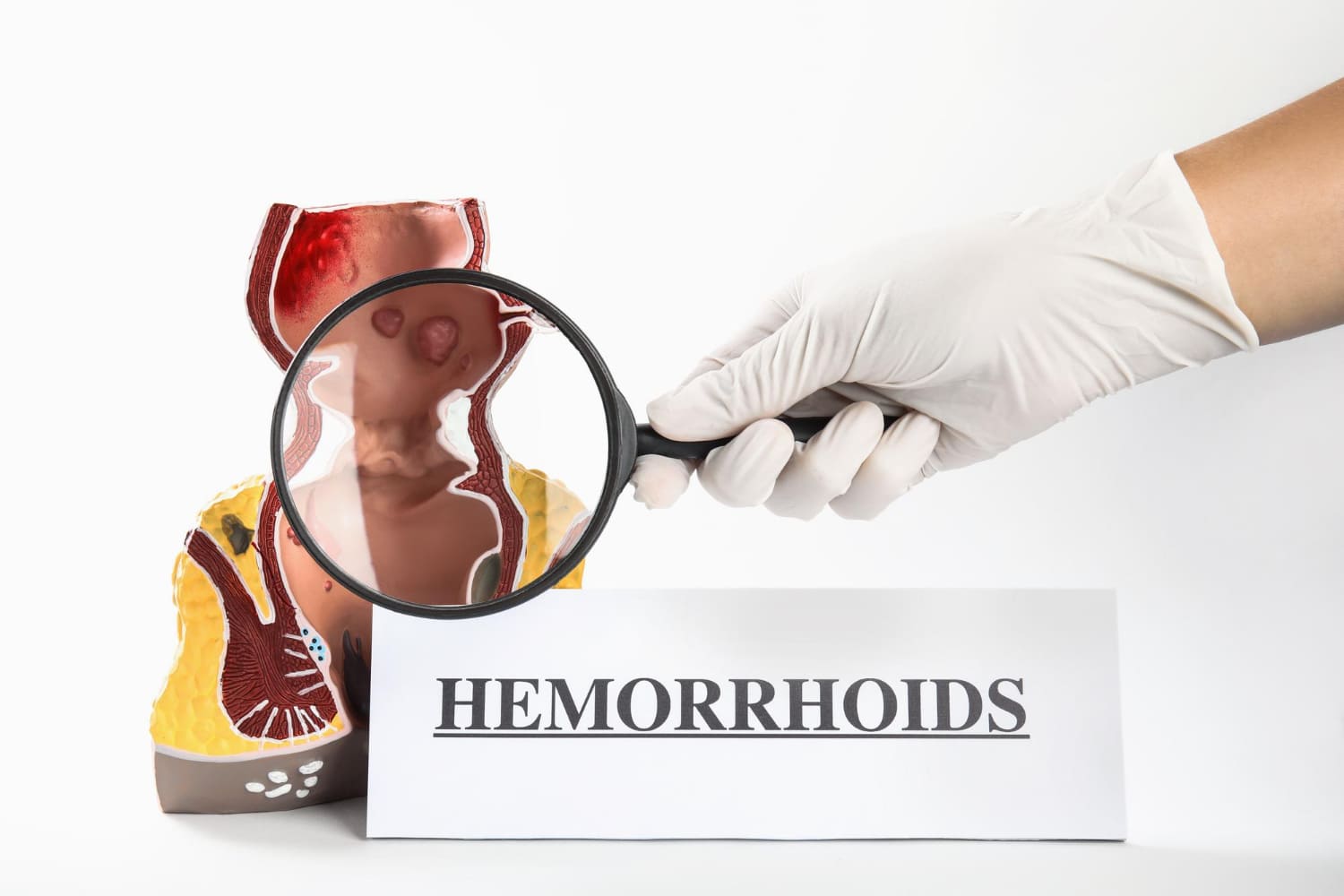
Piles Treatment - Laser Surgery Procedure
What Are Piles?
Piles, also known as hemorrhoids, are swollen veins in the anus and lower rectum. They can occur internally, inside the rectum, or externally, around the external opening of the anus.
Piles can affect people of all ages and genders. However, according to global medical reports, people between 50 and 60 years are more likely to suffer from piles.
Piles is generally not a serious medical condition and can be treated with lifestyle changes and home remedies, like increasing fiber intake, drinking plenty of water, practicing good hygiene, using over-the-counter creams or ointments, and avoiding straining during bowel movements. However, in more severe cases, surgical procedures may be required.
What Are The Types and Grades Of Piles?
Piles can be classified into the following based on their location and characteristics:
Internal Piles
Internal piles develop inside the rectum above the dentate line. They are not visible from the outside and are categorized into different grades based on their severity and prolapse.
- Grade 1: Grade 1 piles are the mildest form of internal piles. They are small and found in the lining of the rectum. They do not protrude out of the anus and usually do not cause any symptoms. Treatment for Grade 1 piles often begins with conservative measures, like lifestyle modifications, sitz baths, topical creams or ointments, etc.
- Grade 2: Grade 2 piles are larger than Grade 1 and may protrude during bowel movements. They protrude from the anus but spontaneously retract back into the rectum after the bowel movement. Treatment options for Grade 2 piles may include non-surgical interventions like rubber band ligation, infrared coagulation, and sclerotherapy.
- Grade 3: Grade 3 piles also prolapse during bowel movements but do not retract independently. They need to be manually pushed back into the rectum. They may cause significant discomfort, pain, itching, bleeding, and difficulty maintaining proper hygiene. Treatment options for Grade 3 piles may include rubber band ligation, infrared coagulation, and sclerotherapy.
- Grade 4: Grade 4 piles are the most severe and advanced stage. They remain prolapsed and cannot be manually repositioned. These piles are large, inflamed, and highly sensitive. Grade 4 piles can cause intense pain, bleeding, and hygiene difficulties. In addition, they may also be associated with complications such as thrombosis (blood clots) or strangulation. Surgical intervention may be necessary for Grade 4 piles, and options may include laser surgery and stapled hemorrhoidectomy.
External Piles
External piles form around the external opening of the anus and can be seen or felt as lumps or bumps. They are found below the dentate line and may induce pain, itching, and discomfort. External piles can be treated using conservative methods.
Conservative treatment options for external piles include sitz baths, topical creams or ointments, pain medications, etc. However, surgery like laser surgery and stapled hemorrhoidectomy may be recommended for external piles if conservative treatments fail to provide relief or if the condition becomes severe.
Surgical intervention is usually considered when external piles become thrombosed, causing severe pain and discomfort.
How Can Piles Be Diagnosed?
A proctologist or an anorectal surgeon can diagnose piles through medical history, physical examination, and diagnostic tests if required. Here is an overview of the diagnostic process for piles:
- Medical History: Your healthcare provider will start by asking about your symptoms, including any pain, itching, bleeding, or changes in bowel movements. They will also ask about your medical history and any previous occurrences of piles.
- Physical Examination: A physical examination of the anal region will be conducted to evaluate for external and internal piles. The healthcare provider may visually inspect the area and gently examine the anus and rectum using gloved fingers to check for abnormalities, swelling, or lumps.
- Digital Rectal Examination (DRE): In some cases, a digital rectal examination may be performed. It involves the insertion of a lubricated, gloved finger into the rectum to assess the internal piles and check for any other rectal abnormalities. The procedure is typically fast and involves less pain.
- Anoscopy or Proctoscopy: These procedures involve using a small, lighted tube called an anoscope or proctoscope to examine the anal canal and rectum more closely. Anoscopy and proctoscopy directly visualize the anal canal and rectum, allowing for a more detailed examination of piles and other rectal disorders. These procedures can help determine the location, size, and severity of the piles, guiding the healthcare provider in developing an appropriate treatment plan.
- Sigmoidoscopy: In this procedure, the healthcare provider uses a sigmoidoscope (lighted tube with a camera) to view the lower part of the colon and rectum. Procedure types include flexible sigmoidoscopy and rigid sigmoidoscopy. Flexible and rigid sigmoidoscopy allows healthcare providers to directly visualize the rectum and lower sigmoid colon, aiding in identifying various conditions, including piles.
- Colonoscopy: Colonoscopy helps examine the colon or the large intestine to check the abnormalities inside it. A colonoscopy evaluates rectal bleeding due to piles or other causes and rules out more serious problems so the doctor can suggest the most appropriate treatment for piles.
Laser surgery
Laser surgery is the safest and most effective surgical option to treat piles. This procedure uses laser energy to shrink and coagulate the piles tissue. However, the surrounding healthy tissues remain unaffected. Laser surgery is a minimally invasive approach performed on an outpatient basis. It is associated with minimal post-operative pain and a relatively shorter recovery time.
What is the difference between open surgery, laser surgery, and stapler surgery?
Here’s a comparison table highlighting the differences between open surgery, laser surgery, and stapler surgery for piles:
| Basis | Open Surgery | Laser Surgery | Stapler Surgery |
| Anesthesia | Generally performed under general or regional anesthesia. | Typically performed under local anesthesia. | Usually performed under general anesthesia. |
| Incisions | Requires one or more incisions to locate and remove the hemorrhoids. | No incisions are made; laser energy is delivered through a probe. | Small incisions are made to insert the stapler device |
| Hemorrhoid removal | Hemorrhoids are surgically excised. | Hemorrhoids are vaporized or coagulated using laser energy. | Hemorrhoidal tissue is removed and repositioned using the stapler device. |
| Recovery time | Longer recovery time with significant postoperative pain and discomfort. | Faster recovery time with minimal postoperative pain. | Faster recovery time with reduced postoperative pain. |
| Bleeding | May have a higher risk of postoperative bleeding. | Generally associated with minimal bleeding. | Reduced risk of bleeding compared to open surgery. |
| Complications | Potential complications such as infection, pain, and wound healing issues. | Reduced risk of complications such as infection and wound healing problems. | Reduced risk of complications compared to open surgery. |
| Cost | The cost of open surgery for piles may range from Rs. 35,000 to Rs. 95,000. | The cost of laser surgery for piles may range from Rs. 45,000 to Rs. 55,000. | The cost of stapler surgery for piles may range from Rs. 60,000 to Rs. 1,15,000. |
Benefits of Piles Laser Surgery
Some potential benefits that are most commonly associated with laser piles surgery are given below:
- 30 Mins Procedure – Laser piles surgery does not take more than 30 minutes to complete. Additionally, you will likely be able to go home on the same day.
- Less Recurrence – Chances of recurrence of your condition after a laser piles surgery are almost zero.
- Painless – Due to the minimally invasive nature of the laser, pain or discomfort during a laser piles surgery is very minimal.
- No Blood Loss – Since the blood vessels in the anal region are almost immediately cauterized, blood loss during the procedure is almost negligible.
- Short Recovery: Recovery after laser piles surgery is comparatively short with most patients being able to recover completely in just 7-10 days after surgery.
- Minimal Risk of Complications: Chances of any complications, such as infection or bleeding, are almost negligible.
How to Prepare for Piles Surgery?
Prior to your piles treatment, your proctologist will likely instruct you to take some precautions and follow some guidelines. These typically include:
- Avoid eating or drinking anything at least 8 to 12 hours before your piles surgery. This is to ensure that the bowel is kept clean and there are no anesthesia-related complications either.
- If you are taking any medications that cause your blood to be thinner, such as warfarin, it is imperative that you stop taking them before your piles surgery. Such medications could put you at an increased risk of excessive bleeding during surgery.
- Keep the surgical site clean. It is also advised to take a shower before arriving at the hospital. However, avoid putting in any lotions or perfumes.
- Avoid shaving the surgical site yourself.
- If you wear any jewelry or ornaments, leave them at home. You do not need them in a hospital and they may even contain bacteria which could compromise the operating room’s sterile environment.
- Make sure to empty your colon before arriving at the hospital. It is advised to use laxatives or enema. This process will help ensure that there is no fecal matter in the colon during the surgery.
- Refrain from smoking or consuming alcohol for 3-4 days prior to your piles surgery.
- Wear comfortable clothes that are easy to take off and do not rub against your skin too much.
- Make sure you have someone to drive you home or accompany you in a cab after your piles treatment. After the procedure, you may experience some anesthesia-related after effects such as nausea, dizziness, and blurred vision. Driving yourself or traveling alone under such conditions could be dangerous.
Which Is The Most Effective Treatment Option For Piles?
Laser surgery is a much safer, quicker, and more effective surgical option for removing piles compared to any other treatments.
Laser surgery, also known as laser hemorrhoidectomy or laser hemorrhoidoplasty, is a minimally invasive surgical procedure used to treat piles. One of the best advantages of this surgery is that it results in minimum bleeding, making it a good option for curing piles. Other advantages of laser piles surgery include the following:
- Less painful and safe procedure- When we talk about any surgical procedure, the first thought that crosses our minds is the pain it inflicts on the body. Laser surgery is one of the least painful surgical methods to treat piles.
- Quick procedure- Removal of piles using laser surgery is quicker than other surgical techniques of removing piles. Laser surgery takes around 30 minutes, depending on the location and number of piles to be removed. Also, the person will be allowed to go home soon after the surgery and will not require a hospital stay.
- Reduced risk of infection- The use of laser energy can help sterilize the treated area, lowering the risk of infection.
- Quick healing- Minimal blood loss and lower chances of infection during the surgery lead to quick healing of the treated area.
- High success rates- Laser surgery has shown high success rates in treating piles. It can effectively remove or shrink piles tissues, providing long-term relief from symptoms like pain, itching, bleeding, and discomfort.
- Minimal postoperative discomfort- Laser surgery is linked with minimal postoperative pain and discomfort compared to open surgery. This can result in a more relaxed recovery period for patients.
- Lower risk of incontinence- Laser surgery targets the piles tissue precisely, reducing the risk of damage to the surrounding anal sphincter muscles. This can help reduce the risk of postoperative incontinence, a potential complication of other surgical procedures.
- Lower risk of recurrence- Laser surgery effectively treats the underlying piles tissue, reducing the likelihood of recurrence in comparison to non-surgical or conservative treatment methods.
Which Doctor is Best for Piles Surgery?
A proctologist or a general surgeon is considered to be the best doctor for piles surgery. A proctologist is a medical professional with a specialization in the diagnosis and treatment of colorectal disease and conditions. These include conditions relating to your colon, rectum, and anus.
What Happens During Laser Piles Treatment?
Diagnosis
In the case of external piles, the doctor can diagnose them with a physical inspection. However, in case of internal hemorrhoids, the proctologist will perform a digital examination to insert a gloved, lubricated finger into the rectum to check for abnormal growth. Additionally, to correctly diagnose internal piles, the surgeon may choose a proctoscope, an anoscope, or a sigmoidoscope to examine the lower rectum.
Laser Surgical Treatment
Laser-assisted surgery for piles is one of the most efficient treatment methods. During the procedure, a focused narrow beam of light is used on the hemorrhoid to ablate or shrink it without affecting the surrounding tissues. It is an advanced, minimally invasive procedure that aids the patient’s faster recovery.
What is the Recovery Process of Piles Laser Operation?
You must also keep in mind the following:
- First, ensure that you keep the surgery site clean to avoid infection.
- Take sitz bath regularly.
- Avoid lifting heavy weights as that adds additional strain to the surgical site.
- Eat meals that are nutritious and high in fiber content. Avoid oily and spicy foods.
- To ensure you are hydrated, drink at least 8-10 glasses of water every day.
- Do not strain yourself during your bowel movement.
- If your bowel movements are hard, consider taking stool softeners to alleviate the strain (only after consulting the doctor).
- Be diligent about taking medications and applying ointments/creams prescribed by your doctor.
What To Eat And Avoid In Piles?
The following are considered good food for piles:
- Flavonoid-Rich Foods: Foods rich in flavonoids, such as citrus fruits (oranges, lemons), berries, cherries, and dark chocolate, may help strengthen blood vessels and decrease inflammation, providing relief from piles symptoms.
- Healthy Fats: Include sources of healthy fats in your diet, such as avocados, seeds, and olive oil. These healthy fats can help lubricate the stool and ease bowel movements.
- Probiotic Foods: Consuming probiotic-rich foods like yogurt, kefir, and sauerkraut may encourage a healthy gut microbiome and improve digestive health.
- Adequate Fluid Intake: Make sure you are adequately hydrated by drinking enough water and other healthy fluids throughout the day. This can help prevent constipation and make the stool easier to pass.
- Vegetables: Consume a variety of vegetables, including leafy greens such as spinach and kale, broccoli, brussels sprouts, carrots, and cauliflower. These vegetables are high in fiber and can stimulate healthy digestion.
- Whole grains: Include whole grains like whole wheat, oats, brown rice, and quinoa in your diet. Whole grains are high in fiber and can add bulk to your stool, assisting in regular bowel movements.
- Legumes: Incorporate legumes like lentils, chickpeas, black beans, and kidney beans into your diet. Fiber is crucial for maintaining regular bowel movements and preventing constipation. Adding legumes to your diet can improve your fiber intake, which helps soften the stool and reduces strain during bowel movements, thereby relieving the discomfort associated with piles.
- Nuts and seeds: Nuts and seeds that can help prevent piles and aid in healthy bowel movement include almonds, walnuts, and chia seeds. Walnuts and almonds, in particular, are exceptionally high in fiber and have strong anti-inflammatory properties, which could minimize tissue swelling in the affected area.
Here are some foods to avoid or limit in your diet:
- Meat: Meat, mainly red and processed meat, is low in fiber, difficult to digest, and contains high sodium. They exacerbate constipation which leads to piles.
- Spicy Foods: Spicy foods can upset the digestive system and worsen piles symptoms such as itching, burning, and inflammation. Therefore, it’s best to avoid or lower the consumption of spicy dishes, hot peppers, and spicy sauces.
- Alcohol: Alcohol can lead to dehydration and contribute to constipation. It is advisable to limit or avoid alcohol consumption when it comes to managing piles.
- Processed Foods: Processed foods, such as fast food, packaged snacks, and processed meats, are often low in fiber and high in unhealthy fats and additives. These foods can contribute to constipation and should be limited in your diet.
- Lower-fiber foods: Low-fiber foods such as white rice, white bread, plain pasta, or noodles result in more straining during defecation as they make stools smaller and hard. Straining increases abdominal pressure, blocks venous return, weakens rectal veins, and makes your piles go from bad to worse. Therefore, it’s best to avoid low-fiber foods in your diet.
- Sugary Foods: Foods high in refined sugars, such as candies, cakes, pastries, and sugary beverages, can lead to constipation and should be limited or avoided. Surplus sugar intake can disrupt the balance of gut bacteria and impact digestion.
What To Do After Piles Surgery?
After surgery, the anal region will be very sensitive. During the first few weeks, it is advisable to relax as much as possible.
Also, it’s crucial to follow post-operative care instructions from your healthcare provider. Here are some general tips that may help during the recovery period:
- Keep your anal region dry and clean- Each time you pass a bowel movement, take a shower or sitz bath. A sitz bath is a warm water bath where you sit to reduce discomfort in your anal area. Soaking this area in warm water soothes your anal sphincter, which helps increase blood flow through the anal tissues. This enables healing and reduces the pain, itching, and irritation. You can also clean the area with wet tissues but avoid excessive wiping.
- Limit your physical activities- Ease your physical activities for a few days until you feel completely fine after your surgery. Avoid lifting or pulling weights or strenuous physical activities for at least two to three weeks. Also, don’t go sedentary; keep moving and walking; however, don’t exert too much pressure on the body.
- Take prescribed medications- Take all medications as prescribed by your doctor, including pain relievers, antibiotics (if prescribed), and stool softeners or laxatives to prevent constipation.
- Apply cold compresses- Applying a cold compress to the anal region for a few minutes at a time can help subside swelling and alleviate pain after surgery. Wrap the ice pack in a cloth or wrap a bag of frozen vegetables in a towel and apply it to the anal area.
- Follow correct sitting techniques- When sitting, utilize a cushion or a donut-shaped pillow to reduce pressure on the surgical area.
- Keep checking what you eat- It is important to cut down on junk, spicy and oily foods for a few days after piles surgery. Consuming any of these may alter your bowel movements, make you constipated, which can exacerbate your condition, or cause diarrhea, which is unhealthy for your pile’s recovery process.

